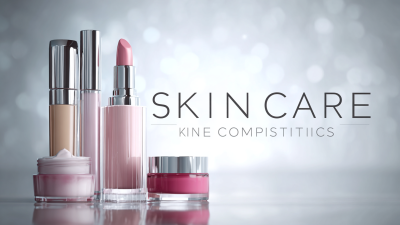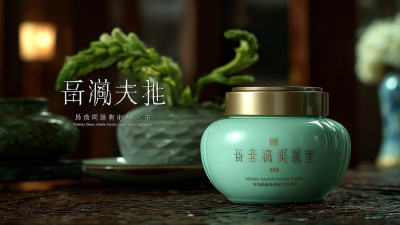The Ultimate Guide to Choosing Skin Products Based on Dermatological Insights and Trends
In today's fast-paced world, the demand for effective skincare solutions has skyrocketed, with the global skin care market projected to reach $189.3 billion by 2025, according to industry analysts. With an overwhelming array of skin products available, consumers are often left questioning which ones will truly meet their unique dermatological needs. Understanding the science behind skin types, ingredients, and emerging trends is crucial for making informed decisions. Dermatological insights indicate that personalized skin care significantly enhances both efficacy and user satisfaction. For instance, a recent study highlighted that 75% of individuals notice a marked improvement in their skin condition when using products tailored to their specific skin concerns. This guide will explore how to navigate the complexities of skin product selection, leveraging professional insights and trends to empower you in your skincare journey.

Understanding Your Skin Type: Essential Dermatological Insights for Effective Product Selection
Understanding your skin type is a crucial first step in selecting the right skincare products. Each skin type—whether it is oily, dry, combination, or sensitive—requires specific ingredients and formulations to meet its unique needs. For instance, oily skin tends to benefit from lightweight, non-comedogenic products that won't clog pores, while dry skin often requires richer, more emollient formulations to restore moisture and soothe irritation. Recognizing these differences is essential for effective skincare.
Additionally, factors such as environmental influences and personal habits can further affect your skin type over time. Seasonal changes may cause dry skin to become more pronounced in winter, while the heat and humidity of summer can aggravate oily skin. By regularly assessing your skin's condition and adapting your product choices, you can maintain optimal skin health. Incorporating dermatological insights, such as understanding your skin's pH balance and the role of specific ingredients like hyaluronic acid and salicylic acid, empowers you to make informed decisions that enhance your skincare routine effectively.
The Ultimate Guide to Choosing Skin Products Based on Dermatological Insights
Top Skin Concerns: Recent Trends in Ingredients and Consumer Preferences Revealed by Industry Data
Understanding consumer preferences is crucial for tailoring skin products that address top skin concerns effectively. Recent industry data highlights key trends in ingredient selection, indicating a shift towards natural and sustainably sourced components. Ingredients like hyaluronic acid, niacinamide, and plant-based extracts have gained popularity, reflecting consumers' increasing desire for formulations that offer both efficacy and minimal environmental impact. Additionally, the rise of multifunctional products underscores a trend toward convenience, as consumers seek solutions that address multiple skin issues in one formulation.
Moreover, the focus on skin health has shifted towards a more holistic approach, with mental wellness and lifestyle factors influencing purchasing decisions. Consumers are now more informed, often researching products thoroughly before committing. This trend emphasizes the importance of transparency in ingredient sourcing and product benefits. Brands that communicate their values and adhere to ethical practices are more likely to resonate with today’s conscientious shoppers, paving the way for innovation that aligns with evolving consumer expectations.
The Role of pH Balance: How It Affects Product Efficacy and Skin Health According to Dermatologists
Understanding the role of pH balance in skincare is crucial for selecting products that truly benefit your skin. According to dermatologists, the skin's natural pH typically hovers around 4.5 to 5.5, falling within the acidic range. This acidity is vital because it helps maintain the skin's barrier function, protecting against harmful pathogens and preventing moisture loss. When skincare products deviate significantly from this pH level, they can disrupt the skin's natural acidity, leading to dryness, irritation, and even increased susceptibility to infections.

When choosing skin products, it is essential to look for formulations that respect and complement this pH balance. Products that are too alkaline can strip the skin of its natural oils, resulting in irritation and exacerbation of conditions like acne and eczema. Conversely, products that maintain a balanced pH can enhance skin health by supporting the microbiome and encouraging optimal function of the skin barrier.
Dermatologists recommend paying close attention to pH levels, especially when trying new products, as this can make a significant difference in both product efficacy and overall skin health.
Innovative Packaging Trends: How Sustainable Practices Are Changing the Skin Care Product Market
Sustainable practices are becoming a cornerstone of the skincare product market, influencing everything from ingredients to packaging designs. As consumers increasingly prioritize eco-friendly options, brands are adapting by embracing innovative packaging solutions that not only reduce environmental impact but also enhance user experience. Bold and colorful designs, often reflective of cultural themes, are being utilized to create an emotional connection with consumers. This approach not only appeals aesthetically but also supports the movement toward sustainability, as companies seek to use recyclable materials and minimal waste.
Looking ahead to 2025, the integration of technology and consumer insights will further reshape the skincare landscape. The emphasis on sustainable packaging aligns with a broader trend towards inclusivity and mindful innovation, encouraging brands to focus on personalizing products. As the luxe beauty market continues to flourish, there's a balanced expectation for products that deliver not just results but also align with consumers' values of sustainability and responsibility. This transformative period beckons a future where skincare is not only about looking good but also about contributing positively to the planet.
Personalized Skin Care: Leveraging Technology and Dermatological Research for Tailored Solutions
In recent years, the pursuit of personalized skincare solutions has gained significant traction, largely fueled by advancements in technology and dermatological research. The global anti-aging products market is projected to expand from $17.04 billion in 2025 to an impressive $30.17 billion by 2033, reflecting a robust growth rate of 7.4%. This trend underscores the increasing demand for tailored skincare experiences that address individual needs, marking a pivotal shift in how consumers approach their skincare routines.
Embracing innovation, many skincare companies are integrating advanced AI technologies to enhance the consumer experience. This includes AI-powered skin detection tools that provide personalized recommendations, ensuring users can select products that align with their unique skin types and concerns. According to InsightAce Analytic, the global AI beauty market is expected to reach $13.34 billion by 2030, indicating a promising future where technology and skincare intersect to deliver effective, tailored solutions to consumers. The 2024 product launches from leading high-end beauty brands demonstrate this commitment to innovation, catering to a diverse range of consumer needs and preferences in the ever-evolving skincare landscape.

Related Posts
-

Strategies for Sourcing Innovative Beauty Products Globally
-

Resilient Growth in Chinese Beauty Care Products Amidst U.S.-China Tariff Challenges
-

Master the Art of Applying Best Skin Cosmetics for Flawless Radiance
-

Unlock Radiant Skin: A Step-by-Step Guide to Choosing the Best Skin Care Cosmetics
-

Premium Body Care Solutions from China for Global Buyers Seeking Excellence
-

Top 10 Skin Care Manufacturers from China Featured at the 137th Canton Fair
